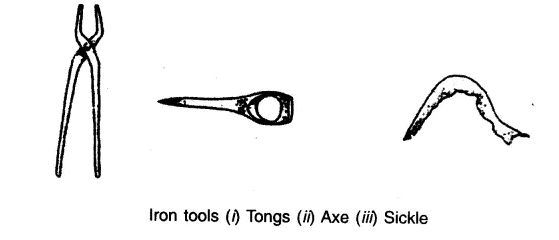NCERT Solutions for Class 6 Social Science History Chapter 8 Villages, Towns and Trades contains answers to all the questions given in the exercise of the history book. These solutions have been created on the basis of NCERT Book Guidelines. The solutions are prepared in simple language by our subject experts to help students in their exam preparation.
Class 6 History Chapter 8 Villages, Towns and Trades Questions and Answers
Question 1: Fill in the blanks:
(a) ________ was a word used for large landowners in Tamil.
(b) The ‘gramabhojaka’ often got his land cultivated by the ________
(c) Ploughmen were known as ________ in Tamil .
(d) Most ‘grihapatis’ were ________
Answer:
(a) Vellalar
(b) Slaves and workers.
(c) Uzhavar
(d) Smaller
Question 2: Describe the functions of the grambhojka. Why do you think he was powerful?
Answer: Gramabhojaka was the village headman, and at times happened to be the largest landowner too. He was a powerful personnel of the village who collected taxes from the villagers in the name of the king, functioned as a judge and enforced the law of the king in the village.
Question 3: List the crafts persons who would have been present in both villages and cities
Answer: Craftsman like the carpenters, weavers, potters, etc. were presumably present in both villages and cities
Question 4: Choose the correct answer:
(a) Ring wells were used for:
1. Bathing
2. Washing clothes
3. Irrigation
4. drainage
Answer: 4. drainage
(b) Punch marked coins were made of:
1. Silver
2. Gold
3. Tin
4. Ivory
Answer: 1. Silver
(c) Mathura was important:
1. Rulers
2. Craftspersons
3. Religious centre
4. Forested area
Answer: 3. Religious centre
(d) Shrenis were associations of:
1. Rulers
2. Craftspersons
3. Farmers
4. Herders
Answer: 2. Craftspersons
Question 5: Which of the iron tools shown on page 79 (of the NCERT textbook) would have been important for agriculture? What would the other tools have been used for?
Answer: The iron tools on page 79 are tongs, axes and sickle as shown in the picture below respectively. Of these, sickle would have been used for agriculture, axe would have been important for chopping trees and to gather firewood and tongs would have been used by a blacksmith for making tools from hot iron.

Question 6: Compare the drainage system in your locality with that of the cities mentioned in the lesson. What similarities and differences do you notice?
Answer: The drainage system in our localities is well-planned. The same system was adopted in the times mentioned in the lesson. Both systems are found to be similar in many ways. The only difference that we find in the modem and the past systems is that the past system was made of mud, bricks and thatch. They could not survive for long. They were not well maintained, but today we have well maintained and developed drainage system. It is made of solid materials. It tests long.
Question 7: If you have seen craftspersons at work, describe in a short paragraph what they do. (Hint: how do they get the raw materials, what kind of equipment do they use, how do they work, what happens to the finished product)
Answer: I have seen craftspeople like cobblers and carpenters in the cities and villages. Cobblers are a common sight and one could be found sitting at almost every corner in the city. They mend shoes by stitching the torn leather or pasting the flapping sole. In villages, they produce handmade shoes and slippers from leather to sell them locally or in urban markets for a good price.